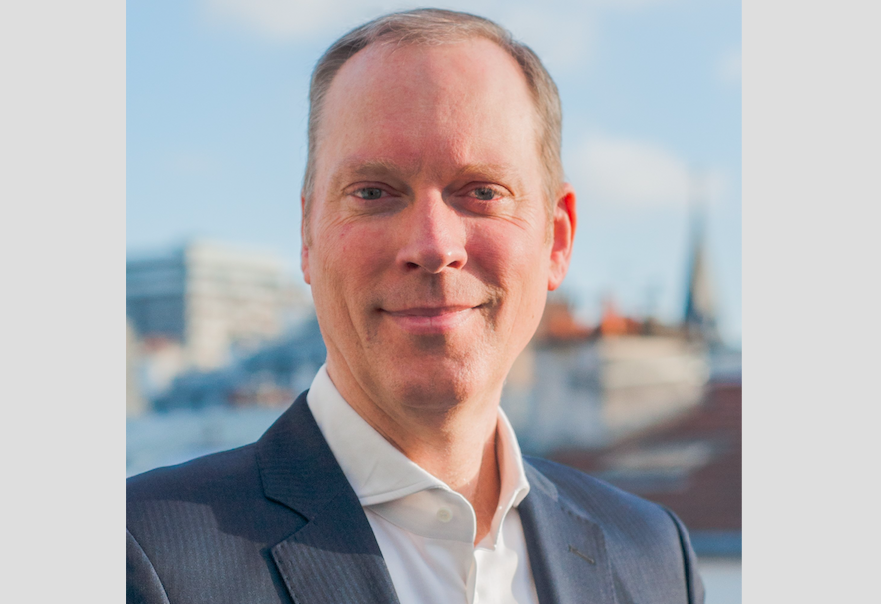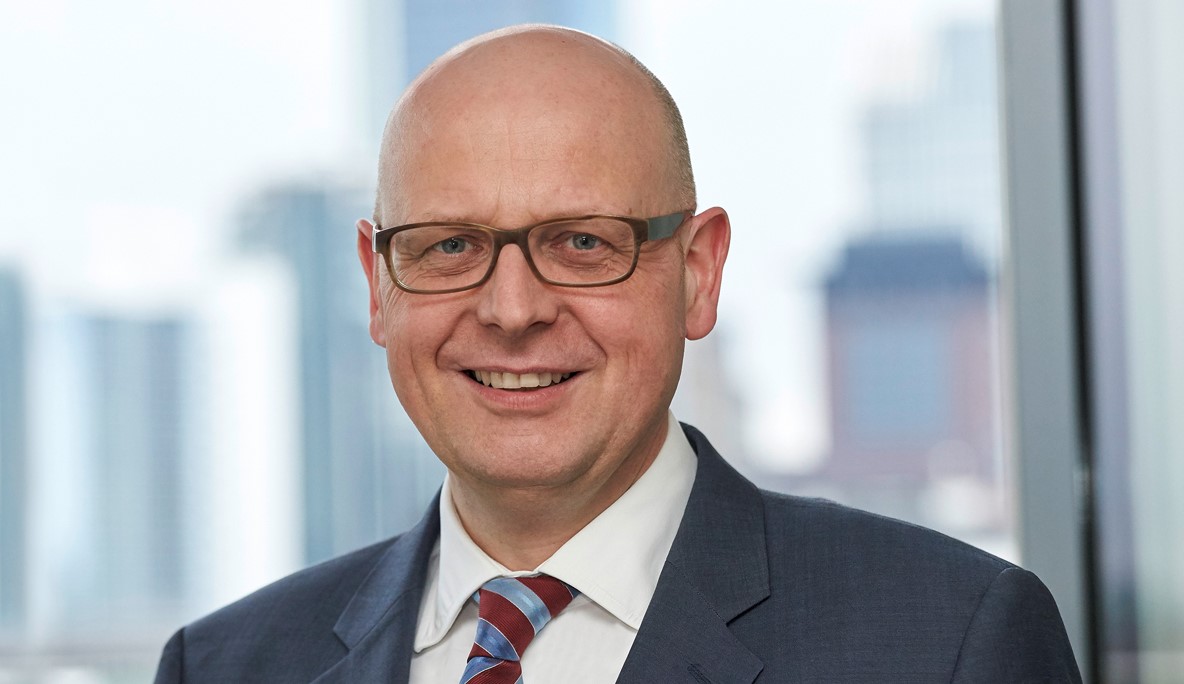We spoke to Matt Christensen, Global Head of Sustainable and Impact Investing at Allianz Global Investors, about the development of ESG investment policies across continents and countries, as well as the fund manager’s approach to sustainability, which has recently launched a range of equity funds aligned with the SDGs. The manager also tells us about his experience as a guest at COP26 and gives his views on the commitments made there.
In the drive towards the green transition, we find different speeds in different regions. Why is it taking so long for the US and Latin America to jump on the sustainability bandwagon?
I believe that what I see in Europe will start to happen here, and it’s just a question of speed. Why hasn’t it happened faster here? I think from an American perspective, there has always been a lot of confusion about whether this is a ‘lose money to feel good’ thing. There were even sectors that thought: Is it something to solve the problems on the coast? In fact, ESG is about a focus on material risk factors that can help provide better insights for asset management. In the USA context, ESG has sometimes been used as a political debate and even at this moment, is caught up in discussions around Biden’s climate bill; however, longer term, ESG will move out of this current debate and become part of the toolkit for fund managers. Now, if you look at Lipper’s revenue inflow data, it is striking that the main inflows over the last year and a half have been sustainable investment funds, so that is scientific evidence around the longer term trend.
In Latin America, similar to the US, there might still be this preconceived and established mentality, as in this region many companies are from more traditional sectors. Requiring mining and oil companies to rethink their business models is not always easy in any country, but that is precisely what they are now doing in Latin America. Moreover, I think this is a trend that, regardless of who is the next president of the US or any Latin American country, is already difficult to turn back.
I am particularly interested in what the asset management industry is doing from an innovation point of view. Every five years we have new trends, we could almost talk about fads, like thematic funds, green bonds… What are you doing from a product innovation point of view for the industry?
First of all we are pushing everything related to showing the client that the return risk profile is better with ESG assets, which is what much of the academic evidence now shows. We have done a lot of work to bring the reports to life, both in terms of the ESG score and in terms of the scores and narrative reports per company. In terms of product innovation, probably where it has taken off the most is in the themes that connect best with the Sustainable Development Goals.
We are also developing a range of blended finance and blended finance vehicles. What we do is we can take some of the risk out of going into emerging markets by having loss protection programmes with groups like the International Finance Corporation or the Inter-American Development Bank, which take a loss, if there ever is one, and then create a return profile, subject, of course, to any credit risk we are exposed to with those entities. Think of this more as a fixed income approach to start generating a four to five per cent fixed income rate of return, which tends to be better than most types of sovereign debt yield products in Europe. That’s really interesting.
So it’s a fixed income fund that you are developing?
We have it available, but it is not in an open-ended fund structure. That’s why I say it’s a blended finance vehicle. You would think of it as a fixed income approach focused within the private debt asset class. But to your question on product innovation, actually, with both listed and unlisted, we are developing more and more products in this sense. We are very keen to link listed and unlisted products over time for our clients around impact investing.
Are most thematic funds focused on sustainability primarily equity or fixed income? What proportions for each type do you manage at Allianz?
First would be equities, then fixed income green bonds and then private equities. Roughly we have maybe 5% in impact investing, 10% in public funds and 5% in green bonds. But 100% of our assets have an ESG risk profile. That’s about $700 billion. As far as ESG integration is concerned, it will affect publicly traded assets which will represent $150 billion of the $700 billion. By the end of the year the whole of our private market, which is 110 billion, will have fully integrated ESG criteria.
The issue of embedding ESG for risk mitigation is what I think should be the first piece of the pedagogy we have to do in the market. It is no longer about sustainable and responsible investing where you exclude things or make them adherent to your specific values. 100% of our assets must incorporate at least an ESG risk assessment.
Looking at emerging markets, when you do this ESG assessment, sometimes there is a love-hate relationship, like with Chinese products (goods). We all hate them, but we all buy them. These are products that are probably not ESG-compliant in many respects. How do you treat the emerging part of your portfolios?
We are seeing a big push for ESG in small-cap emerging markets because there is such an interest in ESG that it is quickly getting coverage. Now in the emerging market we have probably around 70-80% of that ESG coverage. So that’s already very good. We have to be honest, the ESG level in emerging economies is not the same. And that’s why we are rating the ESG practices of emerging economies at a level that is commensurate with their own context. Our role is to say that we can look at the ESG risks of any company in the world and have a point of view because we are not saying they are perfect. They are not. We look at what are the social and environmental governance risks of companies in the countries themselves.
And for emerging companies is it the same, does investing in companies with a high ESG rating really reduce risk, is it more important or less important than in developed countries?
It certainly is important for us in the sense of getting good information to make a decision, because there is typically less ESG information available. I just hired two people in Hong Kong in order to help bring a bottom-up ESG view to our investments in the Asia Pacific region. They are based locally in order to help us gain access to ESG information that we cannot easily get from traditional data providers at this time.
Were you at COP26, what was it like, what were your impressions?
I made the closing speech on the first day of a dedicated investment event and the room was packed. At the same time, outside of the event were protesters, Greta Thunberg and all the others, saying that actions to reduce global warming were not going fast enough. They are right. But I live in France and in France, a few years ago, the government tried to go faster by adding a fuel tax, and that led to this famous yellow vest movement, which created social unrest for a number of months.
So, on a personal level, I can agree that society is not going fast enough. But on a political level, if we go too fast, we risk populations becoming angry and creating social unrest. The tension is a delicate balance for countries to manage.
Related to the COP26 topic, we at AllianzGI have three sustainable investment themes of our enterprise: climate change, planetary boundaries, (which is the connectivity between climate, ocean water, blue finance, biodiversity of the earth, etc.), and inclusive capitalism related to a post-COVID world. These are the three themes that we, as a company, are looking at in our product design, our innovation, our research data and how we start to think about it. In our view, these are the big drivers for the next decade.
What do you exactly mean by ‘inclusive capitalism’?
Inclusive health, education, gender gaps, digitalisation gaps, access to those who can work in offices, those who can’t work from home, those who don’t have any digitalisation. So they are stuck doing menial jobs while the rest of the world has digital access. So you also have to look not only within the country, but also between the developed world and the western world. And I think that’s going to be a big trend after COVID.
At COP26 there was a lot of signing of documents, we were constantly publishing, is this really important, do you think the industry has really united and committed to sustainability after COP26, what do you think?
The Glasgow initiative was a good initiative. Although, it is not a new initiative in the sense that it is something we have just invented, it serves to bring together financial services players to share their sustainability policies. For example, Net-Zero Asset Owner is an asset management initiative chaired by Allianz. There are others and they are all brought together in this group called the Glasgow ‘The Guns’ Initiative. There was also a lot of discussion around climate and all the areas we need to address to be successful.
Overall, I think it’s a positive outcome for the asset management industry as it creates more awareness and measurability and speaks to fixing. What we need from these policies is a top-down target-setting exercise. In the end it comes down to how much we, as an industry, keep pushing the government, the public sector, to deliver on those promises that are made.




